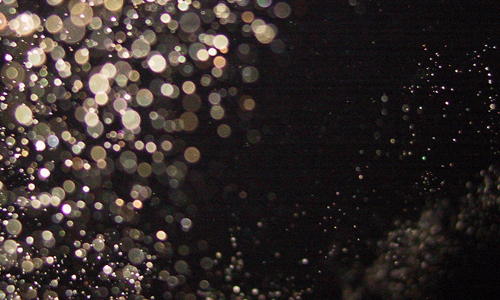Differences between dust and orbs
It is a very difficult task to differentiate dust from orbs. In nature, there are lots of small particles that exist and are actually so small that it is not possible to see them or differentiate them from the naked eye. The application of certain tools and instruments such as magnifying glasses and in very rare cases the microscope and electronic microscope becomes a must. Moreover, the orbs sometimes have a similar appearance to dust particles and that makes it very tough to differentiate the two even for someone who knows and understands the differences between them. Moreover, there is not only one form of an orb; people even believe in spirit orbs! The word orbs is not used as commonly as we use dust and is new to many. Therefore we will first define dust and orbs and then differentiate the two.
The word dust is an umbrella term to define a collection of particles that include pollen, dead skin cells from humans and animals, broken hair pieces from humans and animals, particles of burnt ash, fibres of textiles and paper etc. They usually gather up together as wind blows and can also come from pollutions, volcanic eruptions, soil and/or dust lifted by weather. On the other hand, orbs refer to circular artifacts that occur when photography is done in the presence of flash. They also indicate trails that indicate motion. Orbs are sometimes referred to as backscatter, near-camera reflection or orb backscatter.
It is easy to understand why dust may appear in photographs as there are dust particles in the atmosphere and also on the lens. Any extra illumination would make that visible. This is what happens in flash photography. Orb artifacts are usually captured when there is low brightness and hence the flash of the camera is used. If the distance between the flash and the lens is short then the illumination ensures that it makes any dust particles visible in the final photo. The orb artifacts result due to retro-reflection of light as it hits solid particles which includes dust particles. Therefore it can be safely concluded that the presence of orbs would not be possible without the presence of dust particles. In addition to this there is another belief regarding orbs. What we have discussed comes under environmental orbs. However, there is another category that people describe as spirit orbs. They say that the artifacts that appear in images are due to the presence of spirits around us. This is normally the case when taking photos on a festival or a family occasion and therefore it drives the spirits closer to their families and to come and be around them. This accounts for the times that they are sometimes captured in a photo. Although this whole idea seems somewhat far-fetched, it cannot be just disregarded and hence has been included to be a part of this article. Many people strongly believe in this and some have even explained the reason behind this. They say that all living things have a ‘life force’ that drives them and that is made up of a collection of various types of energy. Since energy cannot be destroyed, when a living being dies, the energy is released from the body and stays with the spirit which in turn stays in the world. That accounts for the faint transparent objects that sometimes appear in the photos we take. What’s more is the fact that these artifacts take many shapes which can be explained by the fact that even spirits have no physical shape or fixed body.
Summary of differences expressed in points
1. Dust-an umbrella term to define a collection of particles that include pollen, dead skin cells from humans and animals, broken hair pieces from humans and animals, particles of burnt ash, fibres of textiles and paper etc.; Orbs refer to circular artifacts, occur when photography is done in the presence of flash; some people also say that there are spirt orbs-due to spirits around us
2. Dust gathers up as wind blows and can also come from pollution, soil, volcanic eruptions and dust lifted by weather; Orb artifacts result due to retro-reflection of light as it hits solid particles which includes dust particles
- The difference between Royal icing and Buttercream icing - March 22, 2015
- Difference between stuffed and deep dish pizza - March 21, 2015
- Difference between Crane and Heron - March 20, 2015

